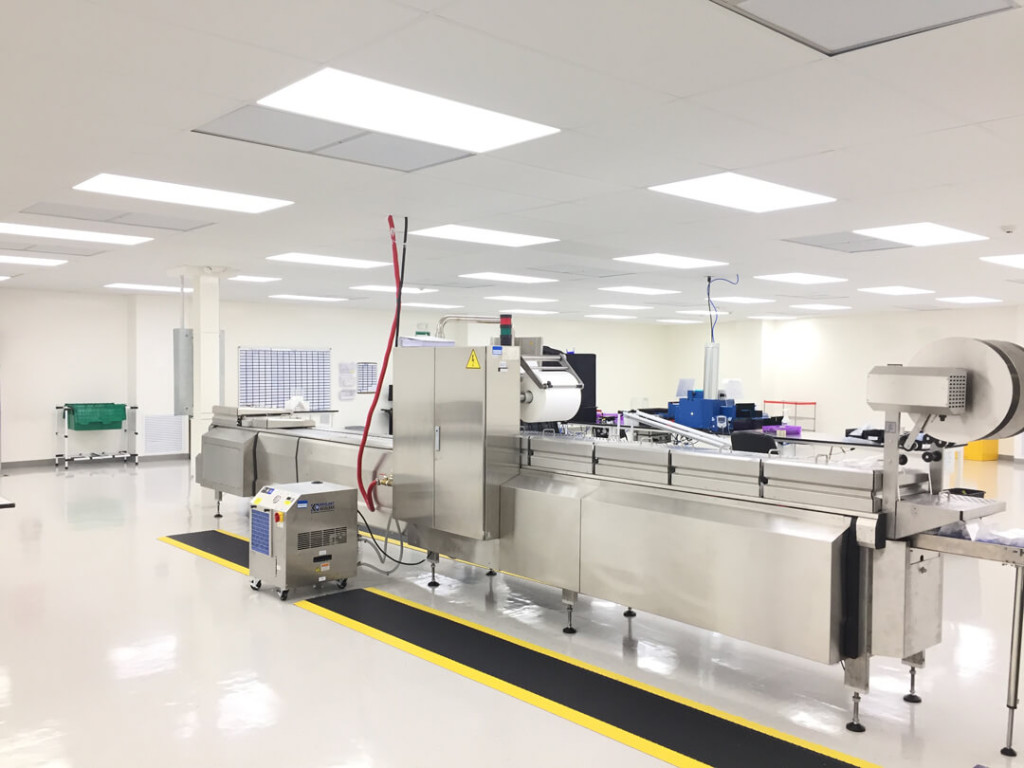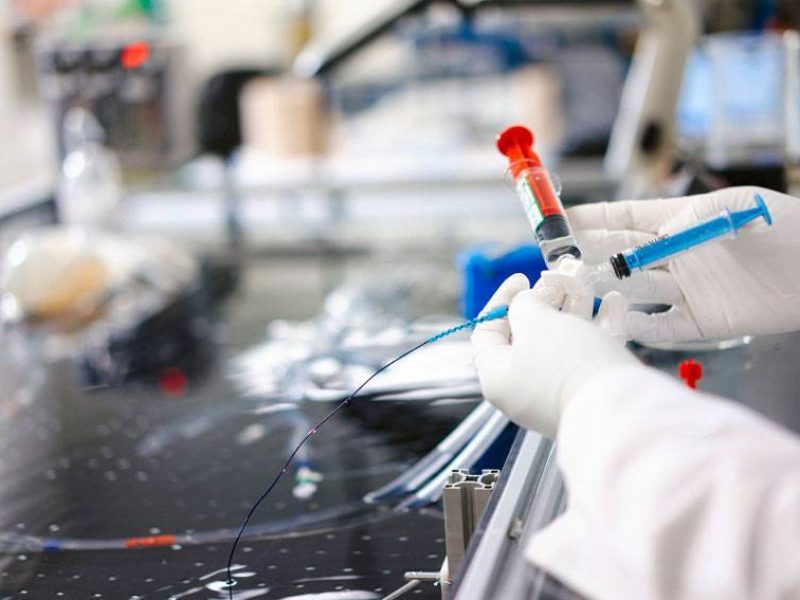In an increasingly competitive and constantly evolving world, innovation is vital to standing out and staying relevant. It is especially significant in the medical device industry; the product’s quality and efficacy can significantly benefit the patient’s well-being. In this context, Seisa Medical’s New Product Introduction stands out as a critical approach to success.
With extensive experience in designing, manufacturing, and marketing innovative medical devices at Seisa Medical, we assist our clients in practical new product introduction in the medical device industry.
Design Cycle: Designing a completely new product for market launch
The design cycle includes stages from conceptualization and design to production and commercialization. The main objective of the design cycle is to ensure that the final product meets market expectations. Simultaneously, ensuring the product’s quality and efficacy is essential.
In the medical device industry, innovation is crucial to market achievement. Innovative products can improve patients’ quality of life and solve unresolved problems. In addition, they can improve the efficiency and effectiveness of treatments.
Understanding the importance of innovative and ingenious design is fundamental at Seisa Medical. For this reason, we have developed a specialized approach to the Design Cycle that guarantees cutting-edge and valuable products.
Our highly trained team works closely with our clients to conceptualize, design and manufacture products that meet market needs. At Seisa Medical, we offer comprehensive services for the introduction of new products in the medical device industry.
Global Transfer Plan
International product transfer is a critical process in introducing new products worldwide. This process involves the transfer of a product from its place of production to other countries. It is done in compliance with international legal and quality requirements, such as ISO 13485:2016.
The main objective of the Global Transfer Plan is to ensure that the product is successfully launched on the world market. It is essential also to ensure that the product’s quality and effectiveness are maintained in each market.
The global transfer of products presents several significant challenges and considerations. Each country may have different legal requirements and regulations that must be followed, which can delay the launch process. Furthermore, this delay can increase the final costs of the product and affect its profitability.
Also, language, culture, and consumer habits can vary significantly between different markets. All these factors require careful product adaptation and a personalized marketing strategy. Our clients streamline the process of introducing new products by working with a specialized service provider.
At Seisa Medical, we provide a specialized approach to the Global Transfer Plan to ensure the products are successfully launched globally. Our highly trained and experienced team works closely with clients to identify and overcome these challenges.
Product Categories in New Product Introduction
We know the importance of new materials, processes, and product innovations in the medical device industry. In the new product introduction, we can categorize this process into three large groups:
Introduction of new materials in the medical device industry
The introduction of new materials is essential for the development of innovative and effective products. New materials can improve product quality and efficiency while reducing production costs. They also improve device security; in this sense, introducing new materials is crucial.
Some examples of new materials include titanium alloys, biocompatible materials, and advanced polymers. These materials significantly impact the final quality and performance of the product. Working closely with customers to identify and use the most suitable materials for each product is a priority for our team at Seisa Medical.
Our team of material experts can help our clients identify the best materials for a specific product. All this considers factors such as durability, safety, biocompatibility, and efficacy. At Seisa Medical, we can produce and manufacture products using various advanced materials.
Introduction of new processes in the manufacturing of medical devices
Continuous improvement in processes is essential to guarantee the quality of the production of medical devices. New techniques can optimize production efficiency, reduce costs and improve the quality of the final product.
Some examples of new processes include the automation of production and the optimization of logistics, accompanied by advanced manufacturing technologies. These processes substantially improve the quality and efficiency of production, resulting in competitive products.
Our work procedures allow us to identify and use each product’s most appropriate manufacturing processes. We have a team of expert professionals who identify these processes considering efficiency, quality, and scalability.
Introduction of the new product or commodities in the market
Introducing a new product or item is part of the business expansion in the medical device industry; new products can provide cutting-edge solutions to unresolved health problems. In addition, they can improve the effectiveness of treatments and increase patients’ quality of life.
Some examples of new product introductions include implantable medical devices, diagnostic devices, and remote monitoring devices. These products can have significant competitive advantages, such as improving the precision and efficacy of treatments; they also allow for reduced recovery time and increased patient comfort.
At Seisa Medical, we work on designing and manufacturing new products effectively. We help our clients to improve production efficiency and product quality, translating into more competitive prices and higher business benefits. We provide experience and knowledge in efficient introductions of new products.
Commitment to Quality and Innovation for a Successful Launch
At Seisa Medical, we provide value to our clients by introducing new products in the industry. Our focus on quality, efficiency, and innovation ensures that customers can successfully and competitively bring new products to market.
We are Seisa Medical, and we offer a wide range of services, from conceptualization and design to production; Furthermore, we have extensive experience in the medical device industry and are knowledgeable about the latest trends and regulations.
If you want to learn more about Seisa Medical’s New Product Introduction or request the service, please contact us! Our team will be happy to help you.

New Product Introduction FAQ
Q. What are the essential steps in the New Product Introduction (NPI) process for medical devices?
A. The essential steps in NPI for medical devices include concept generation, market research, design and development, regulatory compliance, prototyping, testing, production scaling, global transfer, and market launch.
Q. How does material selection affect the quality and safety of medical devices?
A. Material selection is critical as it directly impacts the product’s performance, safety, and biocompatibility. Choosing the right materials, such as titanium alloys or advanced polymers, ensures that the medical device meets regulatory standards and performs effectively in clinical settings.
Q. Why is regulatory compliance critical in the medical device industry, and how can it be achieved?
A. Regulatory compliance is essential to ensure the safety and effectiveness of medical devices. It can be achieved by adhering to international and local regulations, such as ISO 13485:2016, conducting thorough testing, and keeping abreast of regulatory changes.
Q. What considerations are essential for a successful Global Transfer Plan in the medical device industry?
A. For a successful Global Transfer Plan, it’s essential to consider international legal and quality requirements, adapt to different cultural preferences, develop localized marketing strategies, and address language barriers, ensuring the product meets each market’s specific demands.
Q. What are some examples of innovative materials and technologies that are revolutionizing the medical device industry?
A. Examples of innovative materials and technologies include biocompatible materials like bioresorbable polymers, 3D printing for custom devices, robotic surgery systems, wearables for remote monitoring, and AI-driven diagnostic tools.
